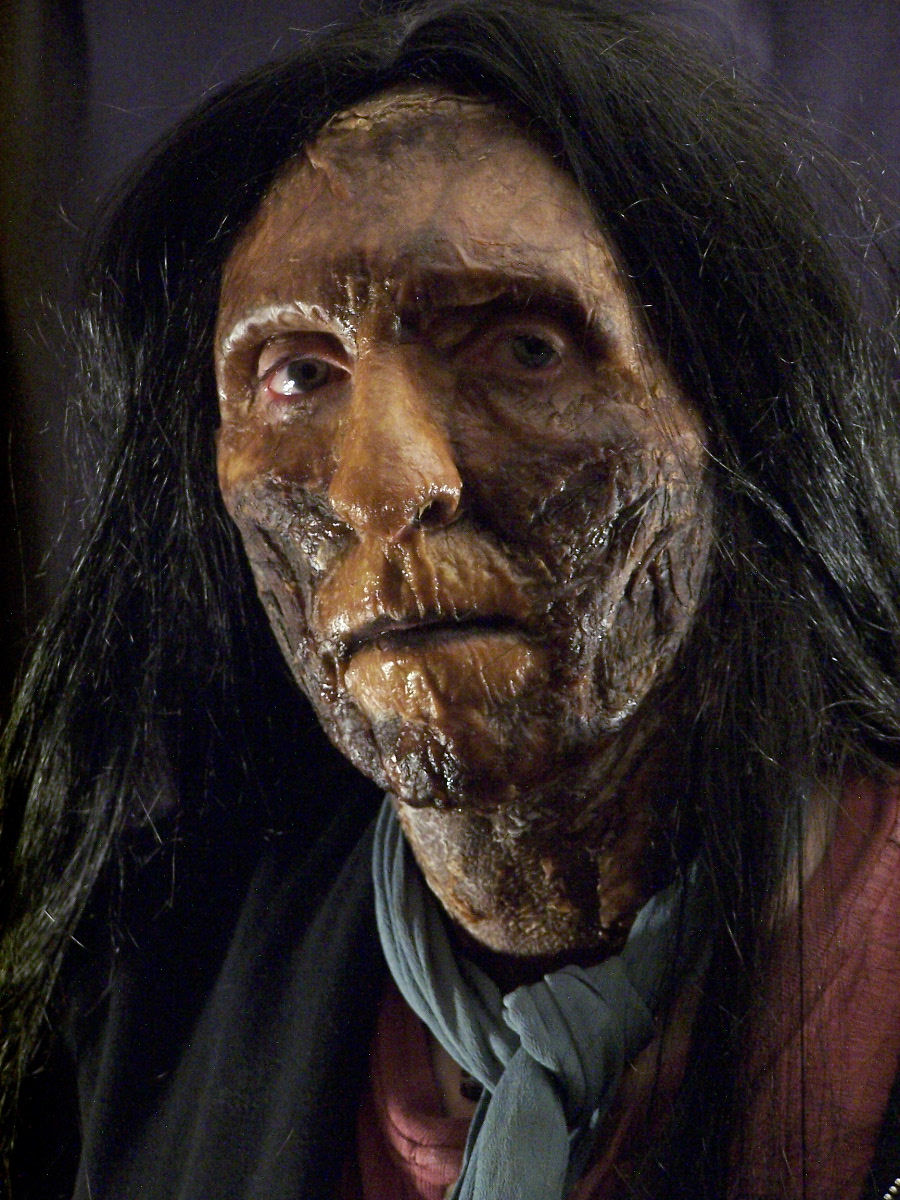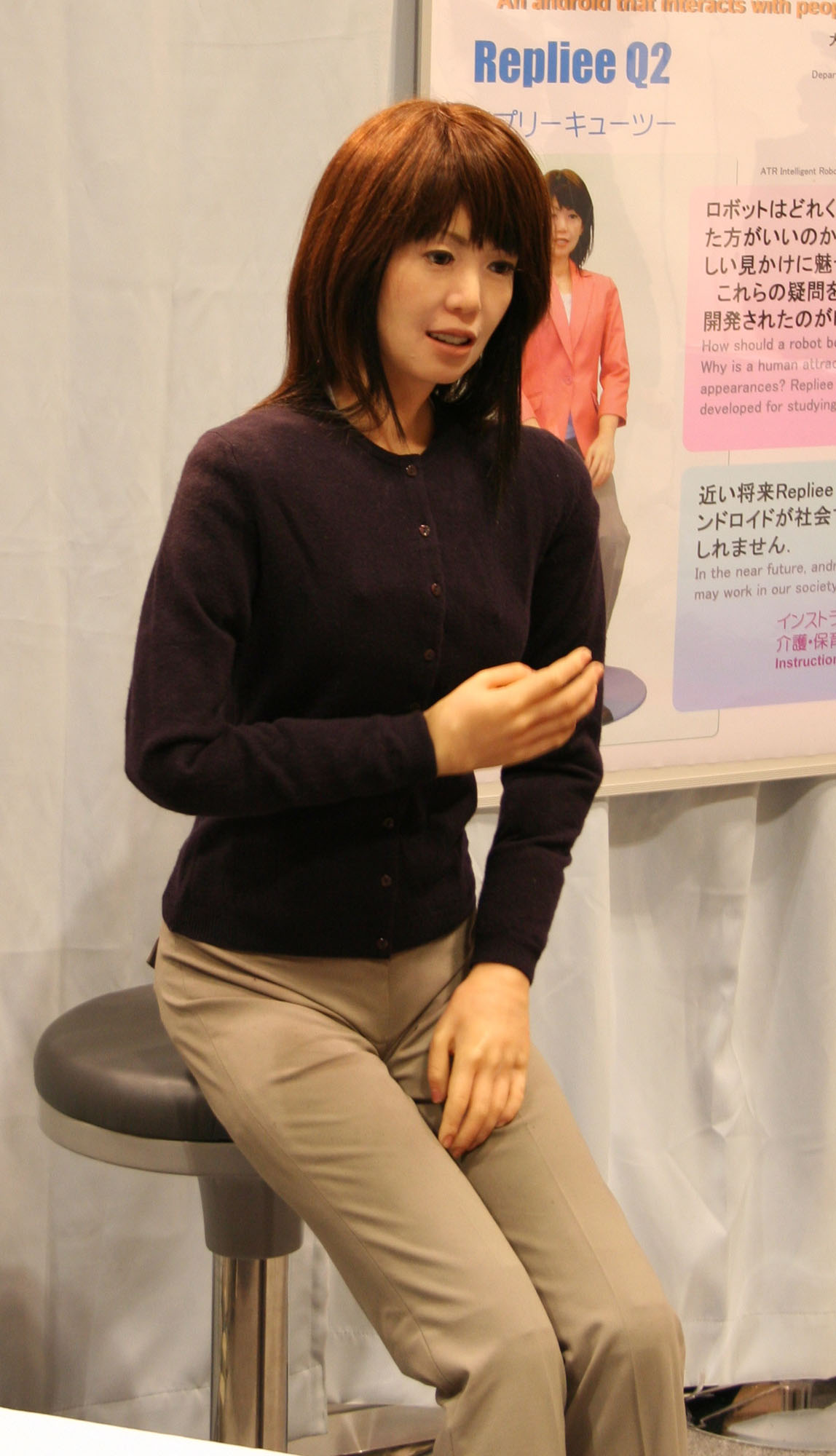|
Frankenstein Complex
In Isaac Asimov's robot novels, Frankenstein complex is a term he coined for the fear of mechanical men. History Some of Asimov's science fiction short stories and novels predict that this suspicion will become strongest and most widespread in respect of "mechanical men" that most-closely resemble human beings (''see android''), but it is also present on a lower level against robots that are plainly electromechanical automatons. The "Frankenstein complex" is similar in many respects to Masahiro Mori's uncanny valley hypothesis. The name, "Frankenstein complex", is derived from the name of Victor Frankenstein in the 1818 novel ''Frankenstein; or, The Modern Prometheus'' by Mary Shelley. In Shelley's story, Frankenstein created an intelligent, somewhat superhuman being, but he finds that his creation is horrifying to behold and abandons it. This ultimately leads to Victor's death at the conclusion of a vendetta between himself and his creation. In much of his fiction, Dr. Asim ... [...More Info...] [...Related Items...] OR: [Wikipedia] [Google] [Baidu] |
Isaac Asimov
yi, יצחק אזימאװ , birth_date = , birth_place = Petrovichi, Russian SFSR , spouse = , relatives = , children = 2 , death_date = , death_place = Manhattan, New York City, U.S. , nationality = Russian (1920–1922)Soviet (1922–1928)American (1928–1992) , occupation = Writer, professor of biochemistry , years_active = 1939–1992 , genre = Science fiction (hard SF, social SF), mystery, popular science , subject = Popular science, science textbooks, essays, history, literary criticism , education = Columbia University ( BA, MA, PhD) , movement = Golden Age of Science Fiction , module = , signature = Isaac Asimov signature.svg Isaac Asimov ( ; 1920 – April 6, 1992) was an American writer and professor of biochemistry at Boston University. During his lifetime, Asimov was considered one of the "Big Three" science fiction writers, along with Robert A. Heinlein and Arthur C. Clarke. A prolific writer, he wrote or edited more than 500 books ... [...More Info...] [...Related Items...] OR: [Wikipedia] [Google] [Baidu] |
Frankenstein
''Frankenstein; or, The Modern Prometheus'' is an 1818 novel written by English author Mary Shelley. ''Frankenstein'' tells the story of Victor Frankenstein, a young scientist who creates a sapient creature in an unorthodox scientific experiment. Shelley started writing the story when she was 18, and the first edition was published anonymously in London on 1 January 1818, when she was 20. Her name first appeared in the second edition, which was published in Paris in 1821. Shelley travelled through Europe in 1815, moving along the river Rhine in Germany, and stopping in Gernsheim, away from Frankenstein Castle, where, two centuries before, an alchemist had engaged in experiments.This seems to mean Johann Konrad Dippel (1673–1734), one century before (not two). For Dippel's experiments and the possibility of connection to ''Frankenstein'' see the Dippel article. She then journeyed to the region of Geneva, Switzerland, where much of the story takes place. Galvanism an ... [...More Info...] [...Related Items...] OR: [Wikipedia] [Google] [Baidu] |
Robotics
Robotics is an interdisciplinary branch of computer science and engineering. Robotics involves design, construction, operation, and use of robots. The goal of robotics is to design machines that can help and assist humans. Robotics integrates fields of mechanical engineering, electrical engineering, information engineering, mechatronics, electronics, bioengineering, computer engineering, control engineering, software engineering, mathematics, etc. Robotics develops machines that can substitute for humans and replicate human actions. Robots can be used in many situations for many purposes, but today many are used in dangerous environments (including inspection of radioactive materials, bomb detection and deactivation), manufacturing processes, or where humans cannot survive (e.g. in space, underwater, in high heat, and clean up and containment of hazardous materials and radiation). Robots can take any form, but some are made to resemble humans in appearance. This is claim ... [...More Info...] [...Related Items...] OR: [Wikipedia] [Google] [Baidu] |
Uncanny Valley
In aesthetics, the uncanny valley ( ja, 不気味の谷 ''bukimi no tani'') is a hypothesized relation between an object's degree of resemblance to a human being and the emotional response to the object. The concept suggests that humanoid objects that imperfectly resemble actual human beings provoke uncanny or strangely familiar feelings of uneasiness and revulsion in observers. "Valley" denotes a dip in the human observer's affinity for the replica, a relation that otherwise increases with the replica's human likeness. Examples can be found in robotics, 3D computer animations and lifelike dolls. With the increasing prevalence of virtual reality, augmented reality, and photorealistic computer animation, the "valley" has been cited in reaction to the verisimilitude of the creation as it approaches indistinguishability from reality. The uncanny valley hypothesis predicts that an entity appearing almost human will risk eliciting cold, eerie feelings in viewers. Etymology Robotics ... [...More Info...] [...Related Items...] OR: [Wikipedia] [Google] [Baidu] |
Transhumanism
Transhumanism is a philosophical and intellectual movement which advocates the enhancement of the human condition by developing and making widely available sophisticated technologies that can greatly enhance longevity and cognition. Transhumanist thinkers study the potential benefits and dangers of emerging technologies that could overcome fundamental human limitations as well as the ethics of using such technologies. Some transhumanists believe that human beings may eventually be able to transform themselves into beings with abilities so greatly expanded from the current condition as to merit the label of posthuman beings. Another topic of transhumanist research is how to protect humanity against existential risks, such as nuclear war or asteroid collision. Julian Huxley was a biologist who popularised the term transhumanism in an influential 1957 essay. The contemporary meaning of the term "transhumanism" was foreshadowed by one of the first professors of futurology, a ma ... [...More Info...] [...Related Items...] OR: [Wikipedia] [Google] [Baidu] |
Paternalism
Paternalism is action that limits a person's or group's liberty or autonomy and is intended to promote their own good. Paternalism can also imply that the behavior is against or regardless of the will of a person, or also that the behavior expresses an attitude of superiority. Paternalism, paternalistic and paternalist have all been used as a pejorative for example in the context of societal and/or political realms and references. Some such as John Stuart Mill think paternalism to be appropriate towards children, saying: Paternalism towards adults is sometimes thought of as treating them as if they were children. Etymology The word ''paternalism'' derives from the adjective ''paternal'', which entered the English language in the 15th century from Old French ''paternel'' (cf. Old Occitan ''paternal'', as in Catalan, Spanish and Portuguese), itself from Medieval Latin ''paternalis''. The classical Latin equivalent was ''paternus'' "fatherly", from ''pater'' "father". Types ... [...More Info...] [...Related Items...] OR: [Wikipedia] [Google] [Baidu] |
I, Robot
''I, Robot'' is a fixup (compilation) novel of science fiction short stories or essays by American writer Isaac Asimov. The stories originally appeared in the American magazines ''Super Science Stories'' and ''Astounding Science Fiction'' between 1940 and 1950 and were then compiled into a book for stand-alone (single issue / special edition) publication by Gnome Press in 1950, in an initial edition of 5,000 copies. The stories are woven together by a framing narrative in which the fictional Dr. Susan Calvin tells each story to a reporter (who serves as the narrator) in the 21st century. Although the stories can be read separately, they share a theme of the interaction of humans, robots, and morality, and when combined they tell a larger story of Asimov's fictional history of robotics. Several of the stories feature the character of Dr. Calvin, chief robopsychologist at U.S. Robots and Mechanical Men, Inc., the major manufacturer of robots. Upon their publication in this col ... [...More Info...] [...Related Items...] OR: [Wikipedia] [Google] [Baidu] |
Three Laws Of Robotics
The Three Laws of Robotics (often shortened to The Three Laws or known as Asimov's Laws) are a set of rules devised by science fiction author Isaac Asimov. The rules were introduced in his 1942 short story " Runaround" (included in the 1950 collection ''I, Robot''), although they had been foreshadowed in some earlier stories. The Three Laws, quoted from the "Handbook of Robotics, 56th Edition, 2058 A.D.", are: ;First Law :A robot may not injure a human being or, through inaction, allow a human being to come to harm. ;Second Law :A robot must obey the orders by human beings except where such orders would conflict with the First Law. ;Third Law :A robot must protect its own existence as long as such protection does not conflict with the First or Second Law. These form an organizing principle and unifying theme for Asimov's robotic-based fiction, appearing in his ''Robot'' series, the stories linked to it, and his ''Lucky Starr'' series of young-adult fiction. The Laws are incorp ... [...More Info...] [...Related Items...] OR: [Wikipedia] [Google] [Baidu] |
Mary Wollstonecraft Shelley
Mary Wollstonecraft Shelley (; ; 30 August 1797 – 1 February 1851) was an English novelist who wrote the Gothic novel ''Frankenstein; or, The Modern Prometheus'' (1818), which is considered an early example of science fiction. She also edited and promoted the works of her husband, the Romantic poet and philosopher Percy Bysshe Shelley. Her father was the political philosopher William Godwin and her mother was the philosopher and women's rights advocate Mary Wollstonecraft. Mary's mother died less than a fortnight after giving birth to her. She was raised by her father, who provided her with a rich if informal education, encouraging her to adhere to his own anarchist political theories. When she was four, her father married a neighbour, Mary Jane Clairmont, with whom Mary came to have a troubled relationship. In 1814, Mary began a romance with one of her father's political followers, Percy Bysshe Shelley, who was already married. Together with her stepsister, Claire Clai ... [...More Info...] [...Related Items...] OR: [Wikipedia] [Google] [Baidu] |
Victor Frankenstein
Victor Frankenstein is a fictional character and the main protagonist and title character in Mary Shelley's 1818 novel, ''Frankenstein, Frankenstein; or, The Modern Prometheus''.. He is an Italians, Italian-Swiss scientist (born in Naples, Italy) who, after studying chemical processes and the decay of Organism, living things, gains an insight into the creation of life and gives life to his own creature (often referred to as Frankenstein's monster, or often colloquially referred to as simply "Frankenstein"). Victor later regrets Playing God (ethics), meddling with nature through his creation, as he inadvertently endangers his own life and the lives of his family and friends when the creature seeks revenge against him. He is first introduced in the novel when he is seeking to catch the monster near the North Pole and is saved from near death by Robert Walton and his crew. Some aspects of the character are believed to have been inspired by 17th-century alchemist Johann Konrad Dippe ... [...More Info...] [...Related Items...] OR: [Wikipedia] [Google] [Baidu] |
Robot
A robot is a machine—especially one programmable by a computer—capable of carrying out a complex series of actions automatically. A robot can be guided by an external control device, or the control may be embedded within. Robots may be constructed to evoke human form, but most robots are task-performing machines, designed with an emphasis on stark functionality, rather than expressive aesthetics. Robots can be autonomous or semi-autonomous and range from humanoids such as Honda's ''Advanced Step in Innovative Mobility'' ( ASIMO) and TOSY's ''TOSY Ping Pong Playing Robot'' (TOPIO) to industrial robots, medical operating robots, patient assist robots, dog therapy robots, collectively programmed ''swarm'' robots, UAV drones such as General Atomics MQ-1 Predator, and even microscopic nano robots. By mimicking a lifelike appearance or automating movements, a robot may convey a sense of intelligence or thought of its own. Autonomous things are expected to proliferate in ... [...More Info...] [...Related Items...] OR: [Wikipedia] [Google] [Baidu] |
Uncanny Valley
In aesthetics, the uncanny valley ( ja, 不気味の谷 ''bukimi no tani'') is a hypothesized relation between an object's degree of resemblance to a human being and the emotional response to the object. The concept suggests that humanoid objects that imperfectly resemble actual human beings provoke uncanny or strangely familiar feelings of uneasiness and revulsion in observers. "Valley" denotes a dip in the human observer's affinity for the replica, a relation that otherwise increases with the replica's human likeness. Examples can be found in robotics, 3D computer animations and lifelike dolls. With the increasing prevalence of virtual reality, augmented reality, and photorealistic computer animation, the "valley" has been cited in reaction to the verisimilitude of the creation as it approaches indistinguishability from reality. The uncanny valley hypothesis predicts that an entity appearing almost human will risk eliciting cold, eerie feelings in viewers. Etymology Robotics ... [...More Info...] [...Related Items...] OR: [Wikipedia] [Google] [Baidu] |

_Irish_Frankenstein_(cropped).jpg)







